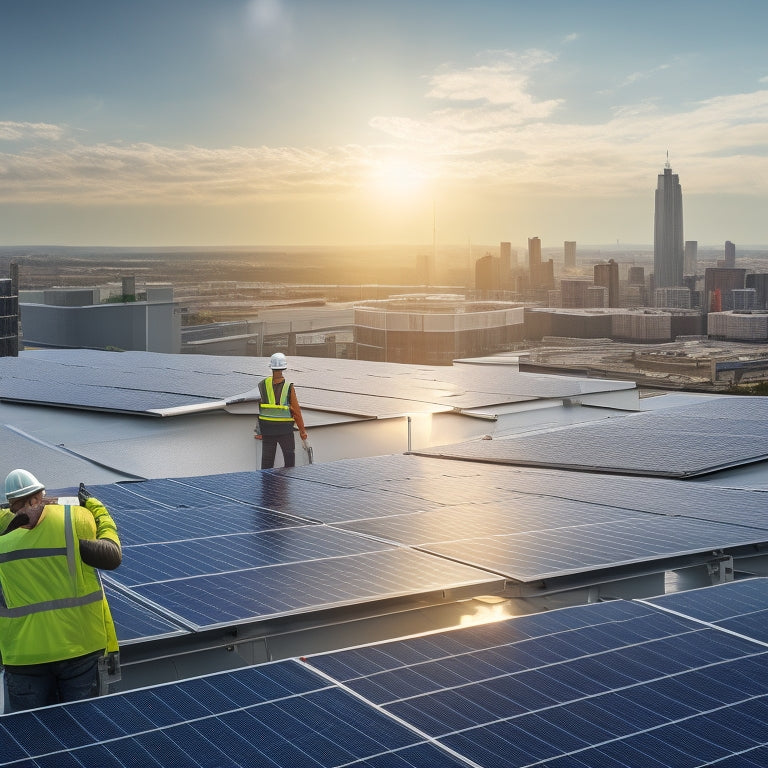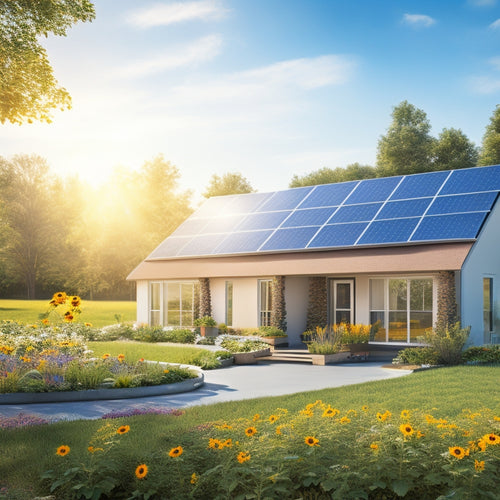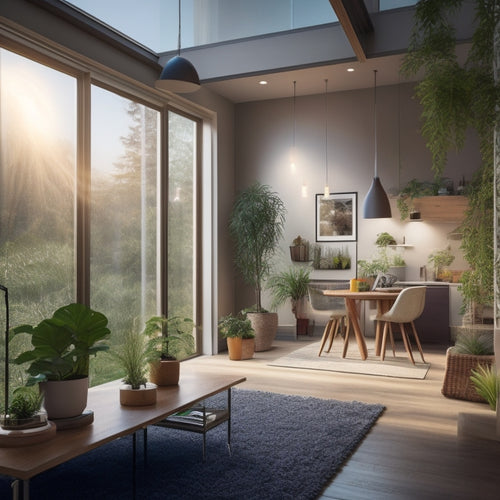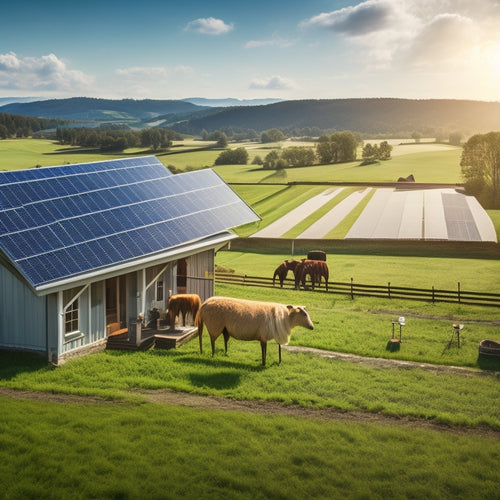
Top 3 Tips for Installing Solar Power Systems in Commercial Buildings
Share
When installing a solar power system in your commercial building, you'll want to prioritize three key areas to maximize energy efficiency and ROI. First, assess your building's suitability by evaluating roof size, orientation, and obstructions, as well as reviewing energy usage patterns and local regulations. Next, optimize system design and installation by selecting high-efficiency equipment, designing for maximum energy yield, and guaranteeing proper system sizing. Finally, confirm ongoing performance monitoring by tracking key performance indicators, using performance analytics software, and adjusting system settings based on data. By following these tips, you'll be well on your way to revealing the full potential of your solar power system.
Key Takeaways
- Conduct a thorough roof assessment to ensure the solar panel system's optimal placement, size, and configuration.
- Select high-efficiency equipment and optimize system design for maximum energy yield, considering factors like shading patterns and roof orientation.
- Ensure compliance with local regulations, building codes, and necessary permits to avoid installation delays and penalties.
- Right-size the system to meet energy demands, avoiding waste or shortages, and plan for potential future expansion or upgrades.
- Implement ongoing performance monitoring and analytics to track energy production, identify areas for improvement, and optimize system settings.
Assess Your Building's Suitability
Before investing in a solar power system, assess your commercial building's suitability by evaluating its solar potential. This vital step guarantees you maximize energy efficiency and avoid costly mistakes.
Start by conducting a thorough roof assessment to determine the size and orientation of your roof, as well as any obstructions that may affect solar panel placement. Consider the age and condition of your roof, as solar panels typically last 25 years or more, and you'll want to confirm your roof can support the weight and longevity of the system.
Next, analyze your building's energy usage patterns to determine your energy requirements. This will help you determine the ideal system size and configuration.
Also, consider any local building codes, zoning regulations, and permits required for solar power system installations in your area. By carefully evaluating your building's suitability, you'll be able to optimize your solar power system's performance, reduce energy costs, and increase your return on investment.
Optimize System Design and Installation
With a thorough understanding of your building's suitability for solar power, you can now focus on refining system design and installation. This phase is critical to ensuring that your solar power system operates at peak efficiency and meets your energy needs.
To refine system design and installation, consider the following key factors:
-
Conduct a thorough site assessment: Evaluate your building's site layout, including shading patterns, roof size, and orientation, to determine the best system configuration.
-
Select energy-efficient equipment: Choose high-efficiency solar panels and inverters to minimize energy losses and maximize power output.
-
Design for maximum energy yield: Refine system design to maximize energy production, considering factors such as panel angle, spacing, and wiring.
-
Ensure proper system sizing: Right-size your system to meet your building's energy demands, avoiding oversizing or undersizing that can lead to energy waste or insufficient power.
-
Plan for future expansion: Consider your building's future energy needs and design a system that can be easily expanded or upgraded as necessary.
Ensure Ongoing Performance Monitoring
How will you know if your solar power system is performing at its best? To guarantee peak performance, you need ongoing monitoring and analysis. This involves tracking key performance indicators (KPIs) such as energy production, system efficiency, and energy consumption.
Performance analytics software can help you identify trends, detect anomalies, and pinpoint areas for improvement. By continuously monitoring your system's performance, you can develop targeted maintenance strategies to address any issues that arise.
This proactive approach helps prevent downtime, reduces repair costs, and maximizes energy output. You can also use data observations to enhance system settings, adjust to changes in energy demand, and refine your energy management strategy.
Regular performance monitoring also enables you to verify that your system is meeting its expected energy production targets and identify opportunities for improvement.
Frequently Asked Questions
What Are the Benefits of Using a Solar Power System for My Business?
You'll reap significant benefits by installing a solar power system for your business, including substantial cost savings through reduced energy bills and a minimized environmental impact, enhancing your brand's reputation and contributing to a sustainable future.
Can I Install Solar Panels on a Flat or Low-Slope Roof?
You can install solar panels on a flat or low-slope roof, but you'll need to evaluate specialized mounting systems and drainage solutions to guarantee a secure and watertight installation, addressing flat roof considerations and low slope installations' unique challenges.
How Long Does a Commercial Solar Power System Typically Last?
Will your commercial solar power system still be generating power in 30 years? You can expect a typical system to last 25-30 years, with a solar panel lifespan of 30-40 years, depending on maintenance requirements and quality of installation.
Are There Any Government Incentives for Commercial Solar Installations?
You'll be pleased to know that, yes, you can tap into government incentives for commercial solar installations, such as tax credits, which can greatly offset your upfront costs, encouraging the adoption of renewable energy sources for your business.
Can I Sell Excess Energy Back to the Grid?
You're the captain of your energy ship, steering the waters of sustainability. Yes, you can sell excess energy back to the grid through energy buyback programs, leveraging grid connection to offset your costs and maximize your solar investment's ROI.
Conclusion
As you near the finish line of your commercial solar power installation, remember that the real expedition is just beginning. You've assessed your building's suitability, optimized system design and installation, and guaranteed ongoing performance monitoring. But will your system truly deliver on its promise of long-term energy savings and ROI? The answer lies in the data - stay vigilant, and you'll reveal the full potential of your investment.
Related Posts
-

Home Solar Systems for Environmental Impact
Home solar systems markedly reduce your carbon footprint by utilizing renewable energy. By adopting solar energy, you...
-

Energy-Efficient Lighting Solutions for Sustainable Buildings
For sustainable buildings, energy-efficient lighting solutions, like LEDs, offer multiple benefits. These bulbs last ...
-

Solar Power Systems for Rural Properties
Solar power systems offer a reliable and efficient energy solution for rural properties, allowing you to gain energy ...


